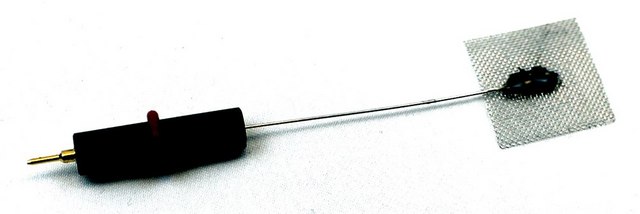349372
Platinum
foil, thickness 1.0 mm, 99.99% trace metals basis
Synonym(s):
Platinum black, Platinum element
Sign Into View Organizational & Contract Pricing
Select a Size
All Photos(1)
Select a Size
Change View
About This Item
Empirical Formula (Hill Notation):
Pt
CAS Number:
Molecular Weight:
195.08
MDL number:
UNSPSC Code:
12141734
PubChem Substance ID:
NACRES:
NA.23
Recommended Products
Quality Level
Assay
99.99% trace metals basis
form
foil
resistivity
10.6 μΩ-cm, 20°C
thickness
1.0 mm
bp
3827 °C (lit.)
mp
1772 °C (lit.)
density
21.45 g/cm3 (lit.)
SMILES string
[Pt]
InChI
1S/Pt
Related Categories
General description
Platinum foils may be used to fabricate multi-electrode spiral nerve cuffs. It was found to be the most active catalyst in the kinetic study of catalytic oxidation of alkanes over platinum foils.
Quantity
14 g = 25 × 25 mm; 28 g = 25 × 50 mm
Storage Class Code
13 - Non Combustible Solids
WGK
nwg
Flash Point(F)
Not applicable
Flash Point(C)
Not applicable
Regulatory Information
新产品
Choose from one of the most recent versions:
Already Own This Product?
Find documentation for the products that you have recently purchased in the Document Library.
Kinetic study of the catalytic oxidation of alkanes over nickel, palladiium and platinum foils
Aryafar M and Zaera F
Catalysis Letters, 48, 173-183 (1997)
Structure characterization of platinum foil for neural stimulating electrodes
Peclin P, et al.
Bio-medical materials and engineering, 24, 1827-1835 (2014)
J-H Franke et al.
The Journal of chemical physics, 138(8), 084705-084705 (2013-03-08)
The adsorption of the chiral molecule lactic acid on chiral Pt surfaces is studied by density functional theory calculations. First, we study the adsorption of L-lactic acid on the flat Pt(111) surface. Using the optimed PBE - van der Waals
Shanshan Cui et al.
BMC structural biology, 13, 4-4 (2013-03-23)
To explore novel platinum-based anticancer agents that are distinct from the structure and interaction mode of the traditional cisplatin by forming the bifunctional intrastrand 1,2 GpG adduct, the monofunctional platinum+DNA adducts with extensive non-covalent interactions had been studied. It was
Yao-Hsuan Tseng et al.
Biochimica et biophysica acta, 1830(6), 3787-3795 (2013-04-02)
Traditional antibacterial photocatalysts are primarily induced by ultraviolet light to elicit antibacterial reactive oxygen species. New generation visible-light responsive photocatalysts were discovered, offering greater opportunity to use photocatalysts as disinfectants in our living environment. Recently, we found that visible-light responsive
Articles
Combinatorial Materials Science identifies breakthrough materials through systematic exploration, aiding material discovery.
Our team of scientists has experience in all areas of research including Life Science, Material Science, Chemical Synthesis, Chromatography, Analytical and many others.
Contact Technical Service
